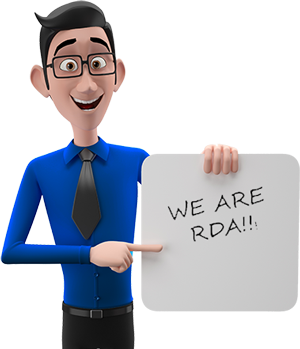A reserve study HOA is a crucial financial analysis tool for homeowners associations.
It helps maintain property values and ensures the financial health of the community. This comprehensive evaluation examines the current state of common areas and projects future expenses for repairs and replacements.
The reserve study process involves key players, critical components, and various levels of analysis. Throughout this article, we’ll explore Washington’s reserve study laws, interpret study results, and discuss how to use these findings for long-term planning. Understanding reserve studies is essential for HOA board members and homeowners to make informed decisions about their community’s financial future.
Understanding Washington’s Reserve Study Laws
Washington State has implemented specific laws regarding reserve studies for homeowners associations (HOAs) and condominium associations. These laws aim to ensure the financial health of communities and protect property values by requiring associations to plan for future expenses.
Senate Bill 6215 (2008)
In 2008, Washington State took a significant step towards regulating reserve studies with the passage of Senate Bill 6215. This legislation encouraged condominium associations to establish reserve fund accounts to pay for major repairs or replacement of common elements. The bill recognized the importance of financial planning for long-term maintenance and aimed to prevent unexpected special assessments that could burden homeowners.
Key provisions of SB 6215 included:
- Encouraging associations to create reserve accounts for components requiring major maintenance within 30 years.
- Requiring associations to conduct and update reserve studies annually.
- Mandating that initial reserve studies be based on visual site inspections conducted by reserve study professionals.
- Allowing associations to withdraw funds from reserve accounts for unforeseen expenses, provided they notify unit owners and establish a repayment schedule.
Senate Bill 5223 (2011)
Building upon the foundation laid by SB 6215, Senate Bill 5223 was enacted in 2011 to further clarify and strengthen reserve study requirements. This legislation addressed some of the ambiguities in the previous law and expanded its scope to include homeowners associations with significant assets.
Notable changes introduced by SB 5223 included:
- Clarifying the definition of “significant assets” for associations required to conduct reserve studies.
- Expanding the component list to include specific items such as roofing, painting, decks, siding, plumbing, and windows.
- Requiring associations to disclose reserve study information as part of the annual budget summary.
- Extending reserve study and account statutes to homeowners associations with significant assets.
Current Legal Framework
The current legal framework for reserve studies in Washington State combines elements from both Senate Bills and subsequent amendments. Key aspects of the current laws include:
- Mandatory reserve studies: Associations with significant assets must prepare and update reserve studies annually, unless doing so would impose an unreasonable hardship.
- Professional involvement: At least every three years, an updated reserve study must be based on a visual site inspection conducted by a reserve study professional, as defined in the Community Associations Institute (Community Associations Institute).
- Disclosure requirements: Associations must provide current reserve study information to prospective buyers or issue a specific disclaimer if none exists.
- Budget integration: Both condominiums and HOAs must provide specific reserve disclosures as part of the annual budget-making process.
- Exemptions: Small associations created before July 1, 2018, with ten or fewer homes or those where the cost of a reserve study exceeds 5% of the annual budget may be exempt from some requirements.
- Flexibility: While the law encourages reserve funding, it does not mandate specific funding levels, allowing associations to determine the most appropriate method for their community.
These laws aim to create transparency about the true cost of ownership in a community association and help maintain property values by ensuring adequate financial planning for future expenses.
Key Players in the Reserve Study Process
The reserve study process involves several key players who work together to ensure the financial health and stability of homeowners associations. These individuals and groups play crucial roles in conducting, interpreting, and implementing reserve studies for the benefit of the community.
Board of Directors
The board of directors holds primary responsibility for administering the reserve account and making decisions related to reserve studies. They exercise reasonable discretion in determining whether a reserve study will be prepared or updated, and whether to utilize the assistance of a reserve study professional. This group of elected homeowners plays a vital role in maintaining property values and ensuring the financial health of the community.
The board’s duties include:
- Overseeing the preparation and updating of reserve studies in accordance with the association’s governing documents and state laws.
- Ensuring compliance with Washington State’s requirements for reserve studies, such as conducting them annually unless doing so would impose an unreasonable hardship.
- Making informed decisions about reserve funding levels and methods based on the study results.
- Communicating reserve study findings and financial planning strategies to homeowners.
Reserve Study Professionals
Reserve study professionals are essential to the process, providing expertise and objectivity in assessing the community’s common areas and projecting future expenses. In Washington State, the initial reserve study must be based on a visual site inspection conducted by a reserve study professional. These experts bring valuable knowledge and experience to the table, helping associations make informed decisions about their financial future.
Key aspects of reserve study professionals include:
- Specialized training and certifications, such as the Reserve Specialist (RS) designation from the Community Associations Institute (CAI) or the Professional Reserve Analyst (PRA) designation from the Association of Professional Reserve Analysts (APRA).
- Expertise in local construction trends and costs specific to the Pacific Northwest region.
- Ability to provide comprehensive analyzes, including Level I (full reserve study funding analysis and plan), Level II (update with visual site inspection), and Level III (update with no visual site inspection) studies.
- Experience working with various property types and sizes, from small condominiums to large master-planned communities.
Community Association Managers
Community association managers play a crucial role in facilitating the reserve study process and implementing its findings. These professionals work closely with the board of directors and reserve study professionals to ensure the smooth execution of the study and the implementation of its recommendations.
The responsibilities of community association managers in the reserve study process include:
- Coordinating with reserve study professionals to schedule site inspections and provide necessary documentation.
- Assisting in the collection and organization of financial data and historical information required for the study.
- Helping to interpret study results and present them to the board of directors and homeowners in an understandable manner.
- Implementing reserve funding strategies and budgeting recommendations based on the study’s findings.
- Ensuring compliance with state laws and regulations regarding reserve studies and disclosures, which can be further explored on Justia US Law
By working together, these key players contribute to the overall financial health and stability of homeowners associations, helping to maintain property values and prevent unexpected special assessments. Their collaborative efforts ensure that reserve studies serve as effective tools for long-term financial planning and community management.
Critical Components of a Washington Reserve Study
A reserve study HOA in Washington State comprises several critical components that work together to provide a comprehensive financial analysis and planning tool for homeowners associations. These components are essential for maintaining property values and ensuring the financial health of the community.
Physical Analysis
The physical analysis forms the foundation of a reserve study. It involves a detailed inventory and assessment of the association’s common areas and assets. This process includes identifying components that require major maintenance, repair, or replacement within the next 30 years. In Washington, the law mandates that the reserve component list must include items such as roofing, painting, paving, decks, siding, plumbing, and windows. Additionally, any component that would cost more than one percent of the annual budget for major maintenance, repair, or replacement must be included.
During the physical analysis, reserve study professionals conduct a visual site inspection to evaluate the condition of each component. They estimate the useful life, remaining useful life, and current repair and replacement costs for each item. This information is crucial for projecting future expenses and developing an accurate funding plan.
Financial Analysis
The financial analysis is a critical component that examines the association’s current reserve fund status and projects future financial needs. This analysis includes several key elements:
- Reserve account balance: The current amount of funds available in the reserve account.
- Percent funded: The percentage of the fully funded balance that the reserve account currently holds. This metric indicates the financial strength of the reserve fund and helps assess the risk of special assessments.
- Interest and inflation assumptions: Projections of how these economic factors may affect future costs and reserve fund growth.
- Current reserve account contribution rate: The amount currently being set aside for reserves as part of the association’s budget.
The financial analysis also considers any special assessments that have been implemented or planned, providing a comprehensive view of the association’s financial health.
Funding Plan Recommendations
Based on the physical and financial analyzes, the reserve study provides funding plan recommendations to ensure the homeowners association can meet its future financial obligations. These recommendations include:
- A recommended reserve account contribution rate to maintain financial stability.
- A full funding plan to achieve 100% fully funded reserves by the end of the 30-year study period.
- A baseline funding plan to maintain a positive reserve balance throughout the 30-year period without relying on special assessments.
- A contribution rate recommended by a reserve study professional, taking into account the specific needs and circumstances of the association.
The funding plan also includes a projected reserve account balance for 30 years and outlines how the association can pay for projected costs without relying on future unplanned special assessments. This long-term planning is crucial for maintaining property values and ensuring the financial stability of the homeowners association.
Related Articles:
- Reserve Studies: Future Planning for South Carolina Communities
“Learn about reserve studies for future planning in South Carolina.” - The Importance of Regular HOA Reserve Studies in Virginia
“Understand why regular reserve studies are important for HOAs in Virginia.” - Conducting Effective Reserve Studies in Kentucky
“Effective strategies for conducting reserve studies in Kentucky.”








